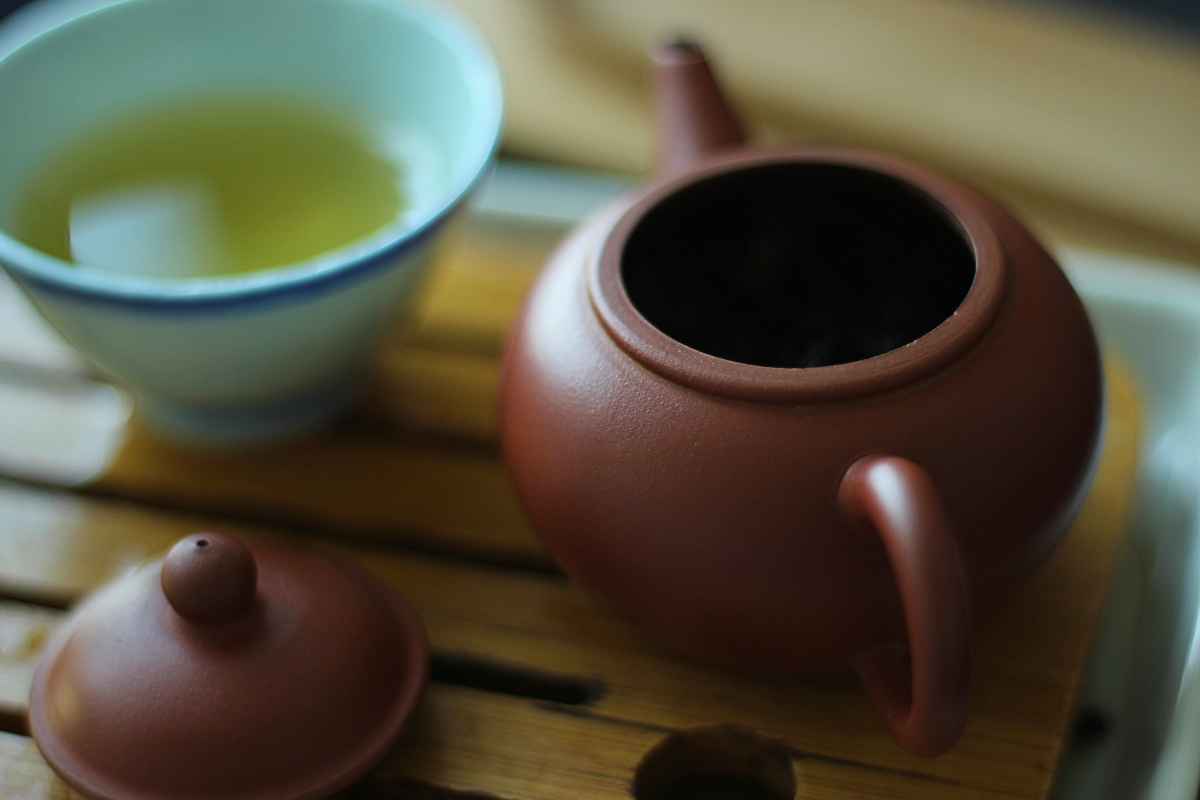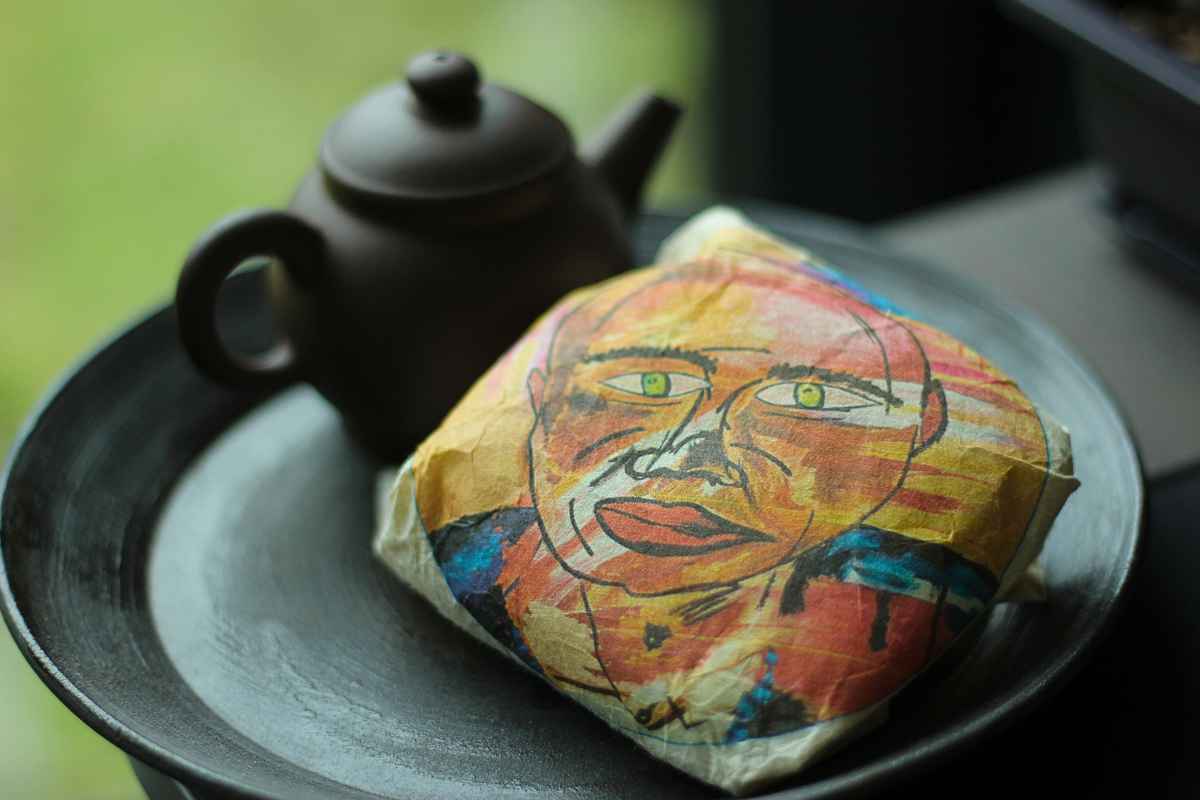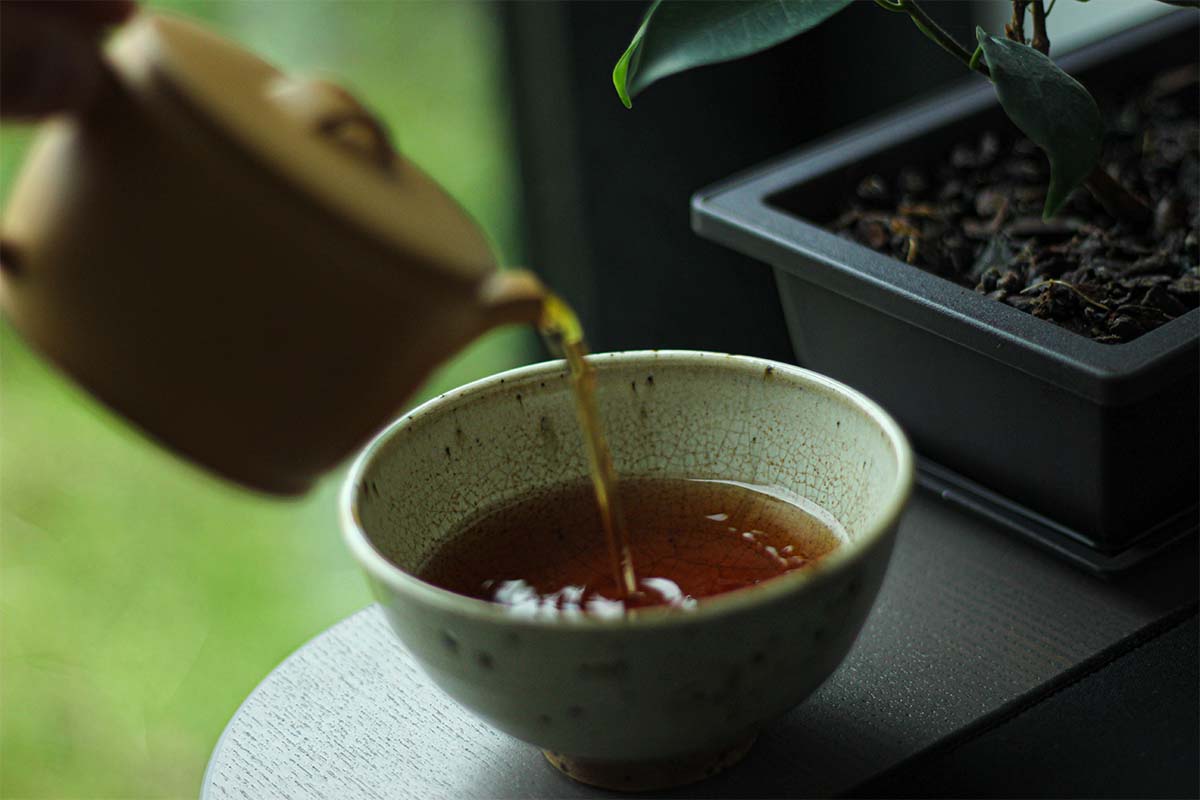All good things come to an end and unfortunately, I only had one sample left from ANMO in Düsseldorf. The final sample was a 2017 Jianyang Lao Bai white tea. After drinking three older samples, this is the most recent version of this tea.
If you want to read about other teas from ANMO, click the following links:
- 2014 Jianyang Lao Bai White Tea
- 2015 Jianyang Lao Bai White Tea
- 2016 Jianyang Lao Bai White Tea
- 2013 Sunsing Aged Tree Shou Pu-Erh
- 2010 Yiwu Ancient Trail
Have you considered subscribing to Tea Adventures? You can enter your email address in the sidebar and get updates whenever I publish a new article. You never have to miss an article again by joining our mailing list.
2017 Jianyang Lao Bai White Tea
This tea is from 2017 and comes from the Jianyang area, which is in Sichuan Province in China. Just like the 2014, 2015 and 2016 versions, it is also made from the Lao Bai cultivar. The tea leaves are pressed into cakes and change dramatically over a relatively short time period. Before it’s ready for consumption, the producer first stores the tea cakes for 500 days. This is necessary for the flavours to develop and that the producer can control this initial ageing process.
One can immediately see the massive stalks. The colours range from beige to olive green and brown. The leaves themselves are really large. The aroma is a warming sweetness and light notes of hay.
The aroma of the wet leaves is a fresh and hayish sweetness with some light floral notes. It almost smells a bit like candy! The colours are mostly brown and some green tints. The size of the leaves and stalks is rather big.
Tea Tasting
- Water 90°C
- 5g for a 100ml shibo
- 1 rinse
- 6 infusions
Don’t know where to buy tea online? I made a page on the website with over 200 online shops and I keep updating it regularly. You can check it over here.
Infusions
Infusion 1 (20 sec): this one has a light yellow colour. The flavours are subtle and silky. I’m getting notes of hay with a touch of sweetness. It’s sweet, but definitely not as sweet as the aroma.
Infusion 2 (30 sec): the colour is a deeper yellow. I’m experiencing a warming sensation when the liquor enters my mouth. There are still some light notes of hay noticeable in combination with notes of a Spring meadow. If I close my eyes, it’s almost as if I’m lying in a field. It also has some very sweet notes to it somewhere beneath the surface.
Infusion 3 (40 sec): no big changes in flavours during this one, only slightly more intense. The sweetness is more prominent and the aftertaste has some roasted notes to it. These roasted notes are similar to the ones I experienced in the 2014 and 2015 versions of this tea.
Infusion 4 (50 sec): the sweetness is fading out and it’s mainly flavours of hay that I’m getting now. There is still a subtle sweetness at the start, but the finish and aftertaste are what you can expect from a (semi-) aged white tea.
Infusion 5 (long): the flavours are more prominent, which is probably due to the longer infusion time. No big changes; there is a subtle sweetness and it’s dominated by notes of hay. The aftertaste has roasted notes to it.
Infusion 6 (long): the initial sweetness is gone and it has a bit of a punch at the start. However, the finish offers an intense sweetness. It’s weird because this fades out really quickly and changes into hayish notes in the aftertaste.
Conclusion
This tea offers more than what you want from a white tea cake. It has a combination of sweetness and notes of hay and it’s just about right. To be honest, I like this one more than the 2016 version because it’s sweeter. Throughout the session, I only noticed subtle changes in flavour. It’s mostly notes of hay with a sweetness that adds a nice touch to it. Overall, this session was more than decent.
If you want to try this tea, contact ANMO on Instagram or visit their teahouse in Düsseldorf.




